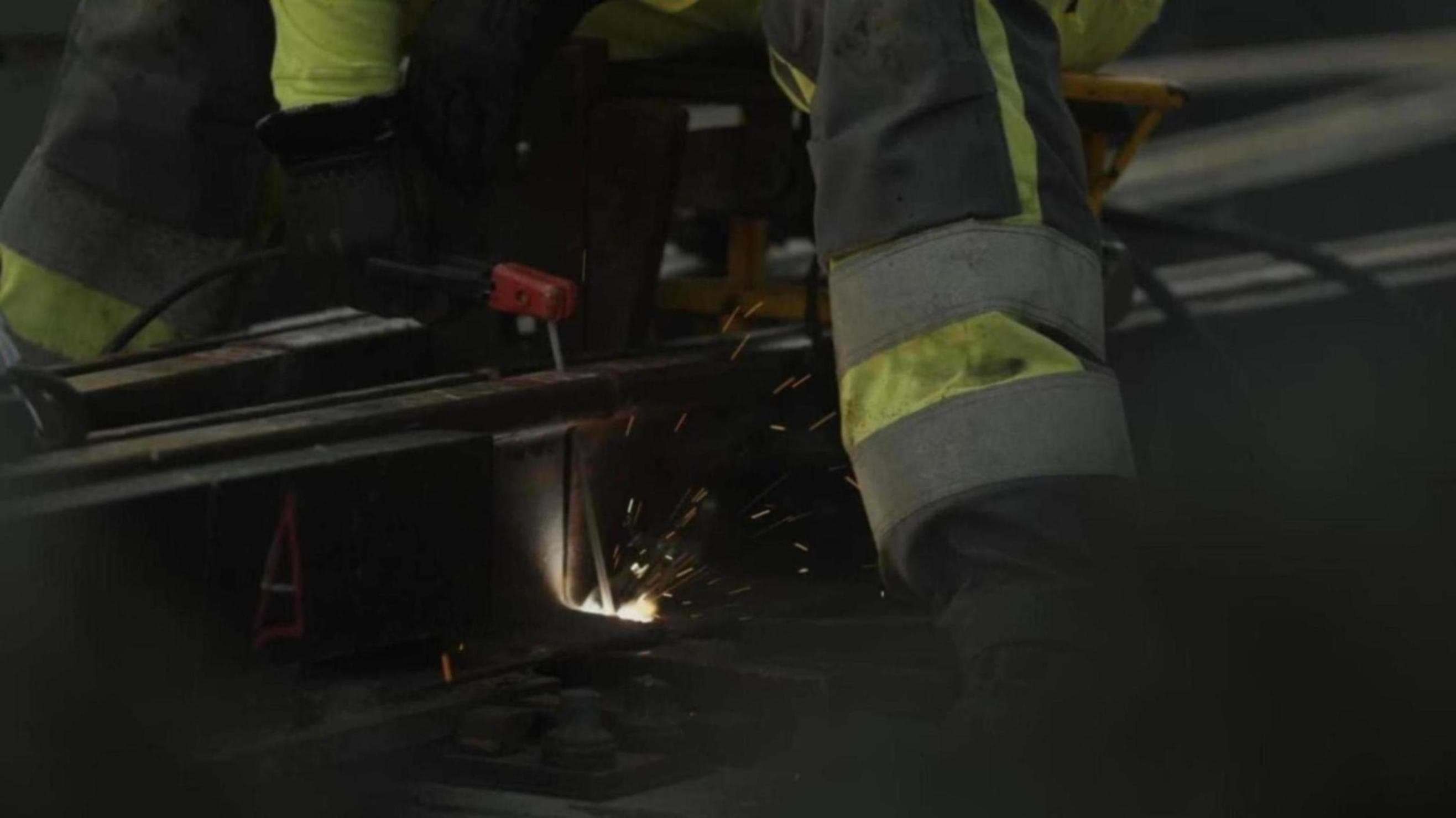Let’s say you’re in Espoo, a city located on the western borders of Helsinki. You want to go shopping in one of the major shopping centres in Helsinki’s east center district, Itäkeskus. There’s only one problem: how will you get there? Itäkeskus is 25 km away. It’s a bit far for walking or even riding a bike. Plus, how would you carry your purchases home? If you happen to own a car, you could drive. But you don’t. So you’re left with one option: bus line 550.
Bus line 550 has served Espoo and Helsinki fairly well for some time. As ever greater numbers of people have moved to the two cities and to their bustling, outlying districts, traffic has grown denser and buses more crowded. Bus line 550 is currently the region’s busiest line. That’s what pushed Espoo and Helsinki to join forces with several partners to construct the Raidejokeri light rail. The line will stretch from Keilaniemi in Espoo to Itäkeskus in Helsinki. Construction on it began in 2019. The first trains are set to run by 2024.
instagrid x YIT testing instagrid ONE max
By getting more people out of their cars and onto public transportation, light rail reduces traffic and carbon emissions and will produce no local emissions. It also transports more people, more efficiently, than the bus can. Once it’s up and running, the light rail will be able to transport over 90,000 passengers a day. That’s over 50,000 more than bus line 550 currently shuttles across the region: a net reduction of 85 percent in carbon emissions.
All partners in the Raidejokeri alliance share the costs and risks involved. One of the key members of this alliance is Finland’s largest development and construction company, YIT.
YIT is committed to maintaining high environmental standards and sustainable practices. It aims to one day become a zero-emissions operator. As an intermediary step it is working to halve its emissions by the year 2030. To help meet its goals, YIT has turned to instagrid. The two make natural partners; they share the goal of eventually achieving zero emissions in construction practices. For instagrid this has meant developing technology and machinery that helps reduce emissions and sponsoring programs to help test out such equipment. One such program is the Clean Air Project, funded through the EU Life program. With the Clean Air Project, instagrid is testing out portable, zero-emission batteries on large-scale projects with twelve construction companies in seven EU countries (Germany, Austria, Belgium, Netherlands, Sweden, Poland, and Finland). The goal is to replace 30,000 fuel generators currently on the market by the end of 2022. In Finland, YIT tested instagrid’s ONE max system as part of their work on the Raidejokeri light rail.
YIT has found that the instagrid ONE max system is powerful, highly portable, and extremely quiet. These traits have been particularly useful for YIT in their work on the Raidejokeri light rail project. Rail construction requires a lot of welding and grinding; to carry out such tasks you need a substantial amount of power. instagrid ONE max meets this challenge by offering continuous power of 3600W and peak power of 18000W. This means you can use it to operate any type of 230V equipment.
All of this power is packed into compact and light form: the instagrid ONE max weighs a mere 20 kg. On such an extensive construction site—25 kilometers!—YIT’s workers need a power source that’s easy to transport. Because it’s relatively light, compared to traditional generators, it’s easy for them to move the instagrid ONE max from one part of the site to another.
The instagrid ONE max has also helped YIT keep things quiet at night, when a lot of the construction has to be carried out. Whereas diesel generators produce noise levels up to 90 decibels, instagrid ONE max is completely silent. Using instagrid ONE max has thus meant better work conditions for those operating the machinery and a good night’s sleep for those who live near the construction site.
YIT’s sensitivity to the future rail line’s neighbors has extended beyond keeping things quiet for the region’s human residents. The Raidejokeri rail traverses three nature reserves, several streams, and an important habitat for flying squirrels. YIT has taken this into account and sought to protect the wildlife potentially affected by construction of the rail. When work along the Vantaa River impacted the native thick-shelled river mussels, YIT carefully transported them to a safer environment. When the construction of a new pedestrian bridge required the destruction of an older one under which numerous common house martins had made their homes, YIT installed artificial nests. They hoped this would encourage the birds to accept the new bridge. The martins returned but built their own nests instead, a sign that they had indeed accepted their new home.
instagrid has played a pivotal role in helping YIT meets its high standards on the Raidejokeri light rail project. It’s an example of why instagrid is a natural partner for rail construction that integrates sustainable practices and maintains its integrity with the natural world.
Why is instagrid ONE max ideal for rail construction?
1. High peak power – suitable for welding
instagrid ONE max has continuous power of 3600W and peak power of 18000W. This means you can power any 230V equipment with the system – including welding and grinding, the main applications used in rail construction.
2. Lightweight – easy to transport
instagrid ONE max weighs only 20kg. This makes it highly portable on large construction sites.
3. Produces ZERO local emissions – supports sustainability goals
Unlike traditional combustion generators, instagrid makes it possible to use renewable energy sources.
Request a call
We’re here to help. Whether you have a question, want to talk through your own applications or book a demo, our team is ready to call you back. Simply fill out the form and we’ll be in touch soon.
